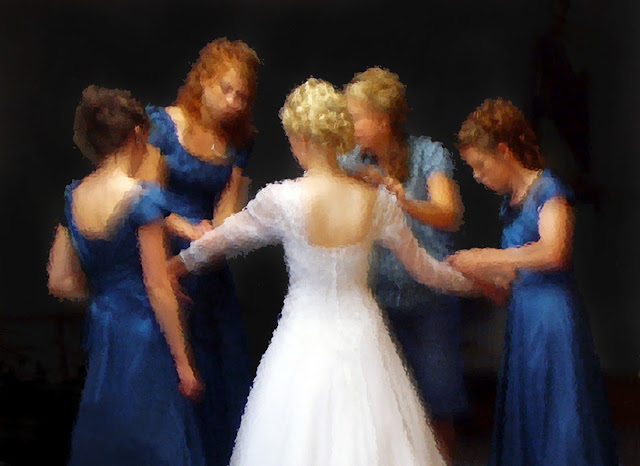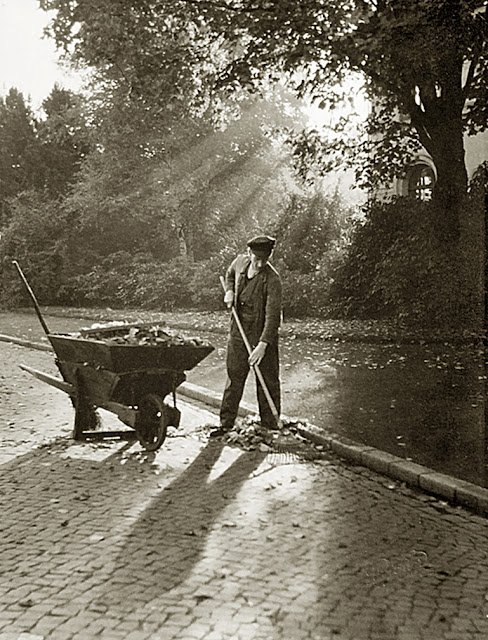A while ago I got into a discussion
with a colleague about digital photography and Photoshop. He still prefers to use film and argued that
all pictures should be shown “the way the camera saw them, the way they come
out of the camera” and he went on to say that Photoshop should not be used.
I definitely disagree with that and
answered: “Why? Digital photography and
Photoshop have considerably lowered my overhead (no film to buy, no processing
costs) and I have full control over the final looks of my images instead of
having to rely on some lab’s idea about what my images should look like. Film is a thing of the past. Just because Photoshop is available doesn't
mean that the photographer doesn’t need the same skills as in the film
days. Composition, lighting etc. are
still as important as ever. Shooting
digital is essentially nothing more than using a different means to record the
image. The addition of Photoshop has
enabled us to control the final outcome of our photographs to a greater degree
than ever before which, when used correctly, will ultimately deliver the best
quality images possible.”
He answered: “However, when you
change that image to some other image, then it is a second image. I know what you are saying but I also know
that you change some of your images to make them into something else.....and so
do others. I just happen to think that
the original image is what the end result should be.”
I answered: “I understand what you
are saying. However, just because
Photoshop has the ability to substantially alter an original image doesn’t mean
that its use will always lead to that.
Photoshop offers the ability to ‘tweak’ our photographs to ultimately
end up with better results. We have the
ability to alter contrast and color saturation, both of which are much easier
to do with Photoshop than during the film days.
In the past photographers routinely retouched their photographs to
reduce blemishes, for instance.
Photographers used changes in exposure and development to reduce or
increase contrast. Are these accepted
methods really any different than using Photoshop to obtain the same
results? Isn’t either approach
effectively altering the image from what the camera saw? Then, of course, there is the question of
what the ultimate purpose of taking a photograph is. Isn’t the final image, as envisioned by the
photographer, what counts? In the past
we used methods like solarization, for instance. That certainly is a considerable departure
from what the initial photograph looked like, the same goes for posterization
or bas relief images, all of which were routinely used to create photographic
art beyond the original image as it came out of the camera. If those methods were okay in the past, then
why isn’t the use of Photoshop acceptable as a means to create pieces of art
derived from otherwise ordinary photographs.
Even simple cropping is altering an image beyond what originally came
out of the camera. Since none of us is
perfect, we naturally get often useless photographs because of a variety of
reasons. In many cases Photoshop has
enabled me to save such photographs with the help of Photoshop. I see that as a benefit.
I have come across similar opinions
fairly often and I wonder if it is really a conviction or if it is more a
resistance to change, combined with an underlying fear of learning a new method
of working with our photographs.
To which extend Photoshop or similar
programs are going to be used ultimately is a personal preference and
opinion. However, it is a tool that
should not be rejected off hand. If we are
honest about our own work, most of us probably reject or throw away more of our
photographs than we save and with digital photography that ratio has most
likely increased. But with Photoshop we
also have the possibility to save an otherwise useless picture and make it into
something worth keeping.

This is a picture my wife took at a
wedding. The original was nothing
special and it was almost deleted.
However, after taking a closer look, she asked me to apply my Photoshop
skills. I tightly cropped the group to
remove as much as possible of the clutter in the room which was further
eliminated with various Photoshop tools.
I then modified the image to give it a painting like appearance. The final result certainly is not at all what
came out of the camera, but it is a photograph worth keeping. As it turned out, it is one of the favorites
of the bride.


The above photograph was taken by my
father with a Leica III in Hamburg in 1949.
He enhanced the sunrays in the background by carefully applying graphite
dust to the rays on the negative to lighten them and thus make them stand out
more.
Two photographs, both manipulated to
allow for a better end-result. Both photographs
that would have less impact, which would be visually less pleasing, had they
not been enhanced. There should be no
question that Photoshop or conventional retouching are means that enable us to
make our photographs better than what our cameras are capable of doing by
themselves. I consider that something
very worthwhile.

No comments:
Post a Comment